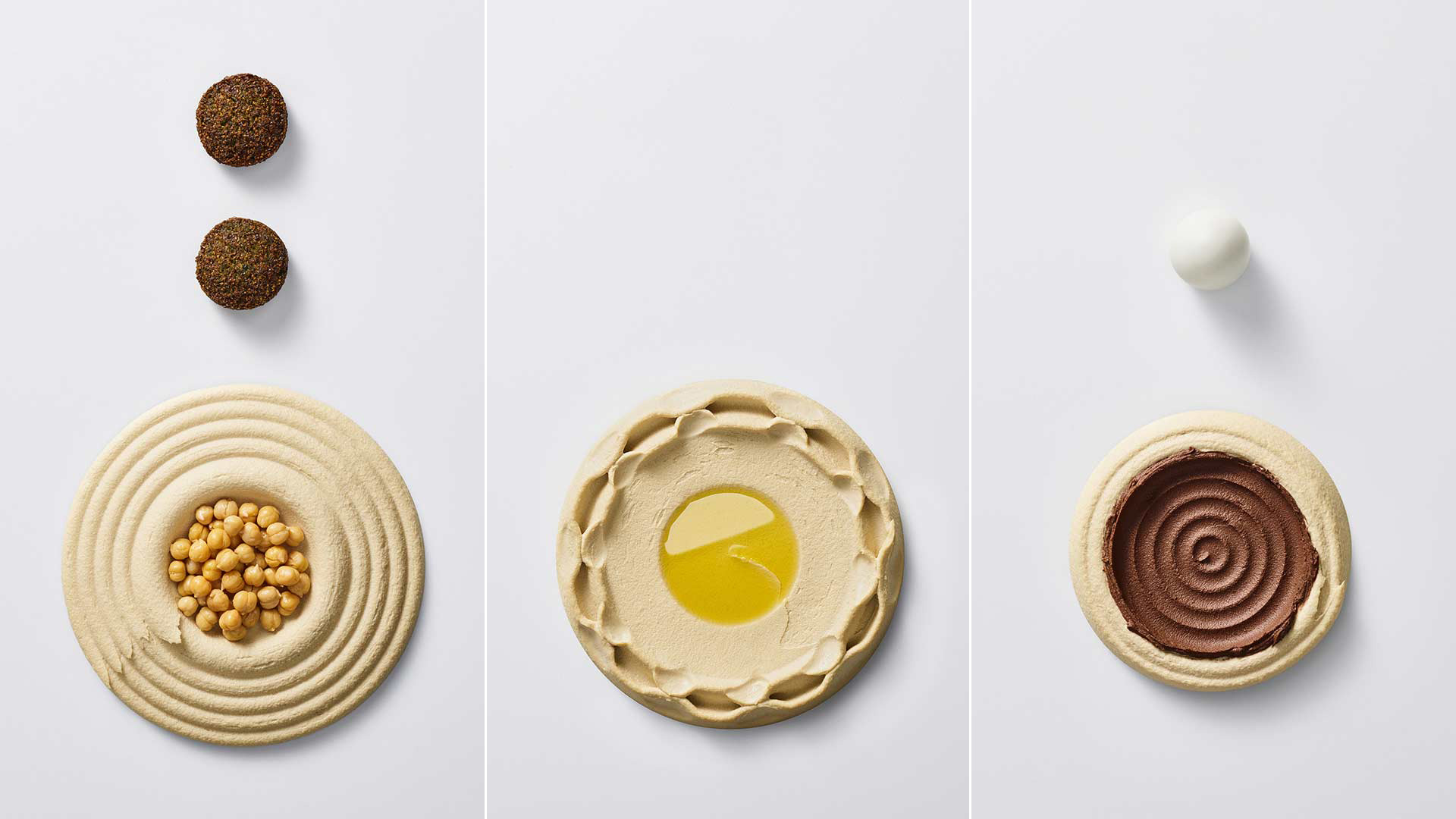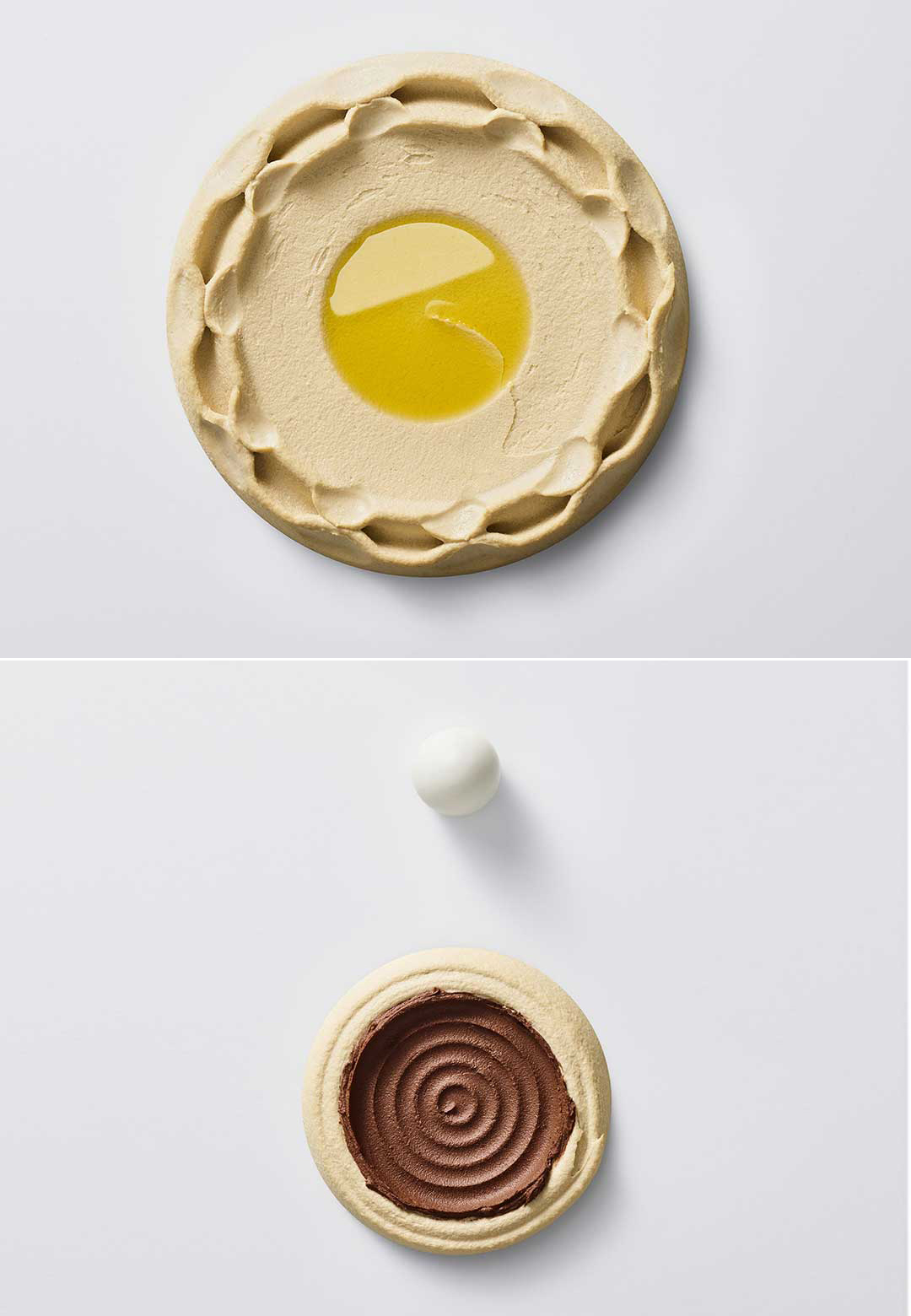“Design is neither our job nor our profession; it is completely weaved into our daily lives,” share Naama Steinbock and Idan Friedman co-founders of Tel Aviv-based Reddish Studio. Design is omnipresent, intricately woven into every facet of life and daily activities, from the simplest routines to the most complex endeavours. It underscores a fundamental interplay between functionality, aesthetics, and sustainability. Inspired by the ubiquitous nature of design in our everyday lives, Steinbock and Friedman set out to investigate the intricate relationships that exist between food products and design processes. The result of this exploration brought to fruition Speculative Hummus a collection of ceramic hummus plates inspired by how hummus is plated to be served. It is a product design that epitomises how innovative design and culinary history can coexist. Through the perceptive eyes of a product designer, classic hummus recipes are imaginatively recreated, undergoing a transformation that combines practical functionality with refined aesthetics.
The project's playful moniker, Speculative Hummus, encourages contemplation on the part designers play in forming cultural identity. The redesigned hummus plate capitalises on the cultural significance of this adored Mediterranean staple to raise concerns about authenticity, locality, and appropriation. The modest Hummus was selected to symbolise the Middle East as a meeting place between modernism and old customs, where social, cultural, and gastronomic themes are discussed through the design process. “We should ask ourselves whether our interventions are needed and what are their consequences. This project is a commentary about changes,” state the designers.
The products in the collection are made from a process called ‘jigger’, a circular production process for ceramic objects that encompasses a sustainable approach to crafting pottery that minimises waste and environmental impact while maximising resource efficiency. This approach extends the life cycle of products and applies various circular economy concepts to the production cycle intending to do away with the idea of waste. Speculative Hummus is a play on the word ‘plating’, all of the dishes are local classics: hummus plate, chickpeas and falafel, half plate, hummus with fava-bean mash and egg, hummus with tahini.
The plastic patterns that Steinbock and Friedman invented for Speculative Hummus shape amorphous lumps into ridged circles, resembling the arm of a record player and moulding the puree as it rotates on a platform akin to a pottery wheel. With their hands, the two delicately added additional details and enhanced the base. Once the plates were designed they were meticulously photographed and then projected onto screens, evoking the aesthetic of a fast-food joint's menu. This series of images treat hummus dishes as museum-worthy subjects for display, highlighting the evolving relationship between food art and image culture, particularly within the context of contemporary social media dynamics.
Speculative Hummus represents a complex commentary on cultural identity, sustainable design, and the changing dynamics of food and image culture that goes beyond the simple design of a product. Steinbock and Friedman's creative methodology not only reimagines traditional hummus recipes through a design lens but also provokes thought about how designers shape societal narratives and promote conversation about authenticity and appropriation. The combination of innovative plastic patterns with circular production methods, not only demonstrates how design can revolutionise culinary traditions but also serves as a poignant reminder of how design and culture are intertwined in modern society. Through this project, Steinbock and Friedman ask us to consider the lasting significance of food as a cultural artefact in the digital age, as well as the significant impact of modern design on our daily lives.






 Sign in with email
Sign in with email










What do you think?